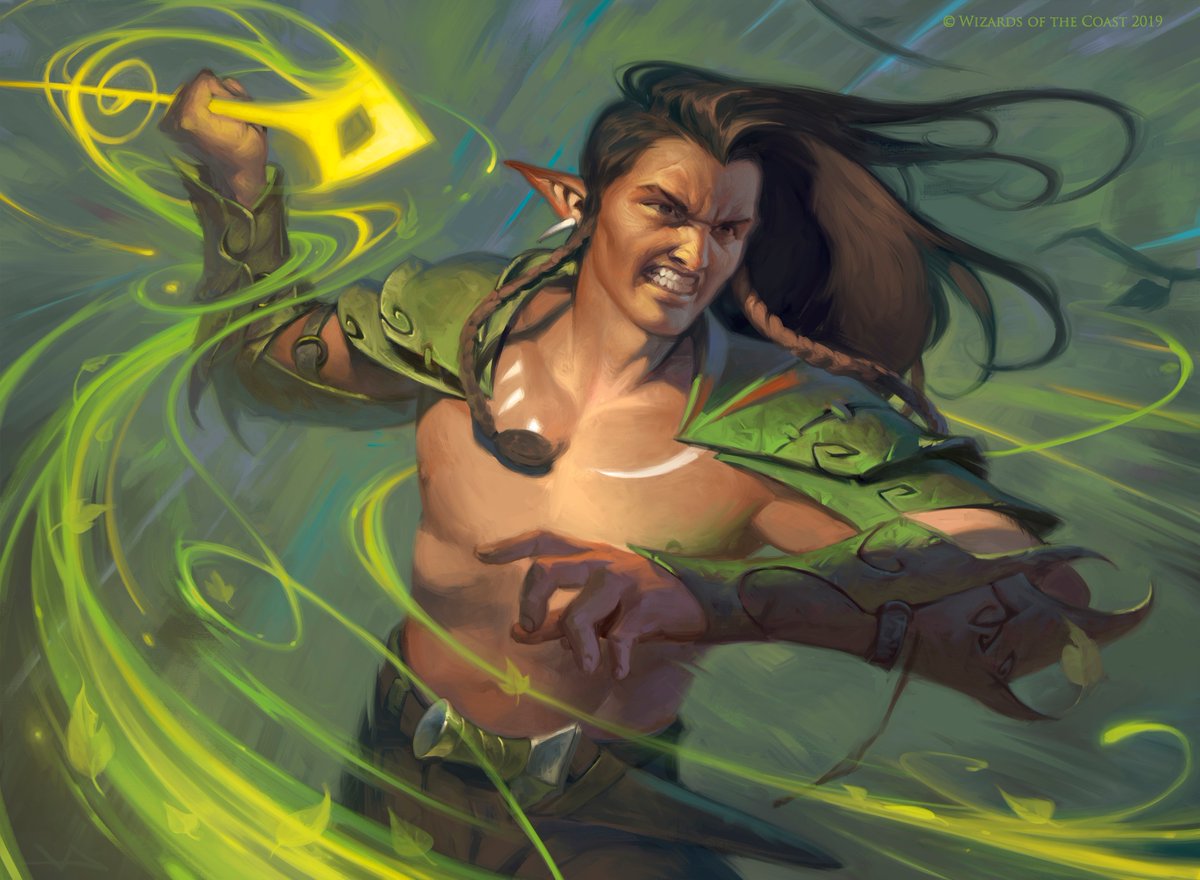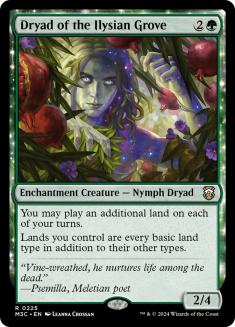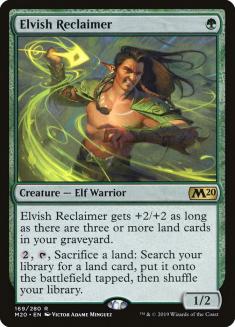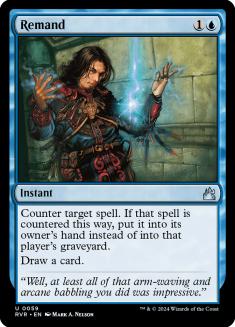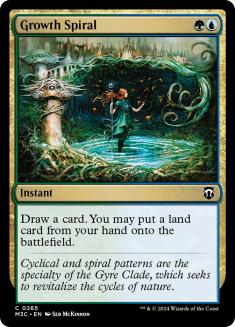Modern is in a pretty cool place right now. There are a ton of different archetypes to choose from, but no one would argue with virtually any archetype built around my pick for Best Creature of All Time:
Throughout all of the most degenerate eras of Modern, Primeval Titan has lasted and flourished. During the height of Dredge, Primeval Titan was still being cast for Bojuka Bog. When it wasn’t the most disgustingly degenerate deck around, it was a key player in so many different metagames because the card Primeval Titan is so powerful. But the true strength of Primeval Titan has been and always will be centered around the lands you can find.
My first Primeval Titan deck came at the beginning. I piloted Primeval Titan at the very first Modern Pro Tour in an attempt to build the most broken Cloudpost deck of all time. Unfortunately, my record did not reflect just how good I thought my deck was, but I was one of the first to play Amulet of Vigor in an attempt to take advantage of lands entering the battlefield tapped!
Creatures (12)
Lands (26)
Spells (22)
Sideboard

Since then, there have been many combo- and control-oriented builds of Primeval Titan. It’s just one of the most game-breaking six-drops Magic has to offer. While it will rarely win on the turn you cast it, finding two specific lands often leads to warping combos that generate small advantages that are hard to overcome through conventional means. Outside of a dedicated combo deck, it’s very hard to attack these decks after they’ve resolved Primeval Titan because the lasting advantage at that point comes from a card type that’s difficult to interact with.
The last two years or so have seen a devolution of the Primeval Titan deck, away from Amulet of Vigor and a combo-style engine into more of an interactive midrange/control deck. Tools printed in the last few sets have given Primeval Titan decks multiple ways to build the archetype that don’t require filling your deck with cards that are weak on their own.
The ability to play multiple lands in one turn is just about all you can ask for in a card designed for a Primeval Titan deck, but I’ll do you one better. Dryad of the Ilysian Grove works well with Simic Growth Chamber just allowing you to hit multiple land drops. At this point, we all know the combo with Valakut, the Molten Pinnacle, but describing exactly what adding that combo to the archetype provides is a little trickier.
Dryad of the Ilysian Grove allows your Primeval Titan deck to play like a control deck. Using Dryad and Valakut to machine-gun down all your opponent’s creatures means you aren’t playing a combo deck, but you do still have the ability to combo-kill finish with Valakut. When you’re not going “full combo,” you can go “half combo,” as Gerry Thompson used to call it. You assemble a card or two together to form an engine that provides lasting and consistent card advantage. When everything comes together, that usually results in a dubski, but the micro-advantages gained can buy you time until you reach that tipping point.
It wasn’t until the release of Elvish Reclaimer that we started to see a lot of variation in the Primeval Titan archetypes. No longer was Amulet of Vigor the best thing to be doing. Instead, building the archetype like a midrange shell with Eladamri’s Call to tutor for Primeval Titan or various bullets became much more popular.
Creatures (14)
- 4 Primeval Titan
- 4 Elvish Reclaimer
- 4 Dryad of the Ilysian Grove
- 1 Skyclave Apparition
- 1 Tangled Florahedron
Lands (33)
- 1 Forest
- 2 Wooded Foothills
- 1 Plains
- 4 Windswept Heath
- 1 Snow-Covered Plains
- 3 Snow-Covered Forest
- 1 Sacred Foundry
- 1 Selesnya Sanctuary
- 2 Temple Garden
- 1 Ghost Quarter
- 4 Flagstones of Trokair
- 1 Vesuva
- 2 Valakut, the Molten Pinnacle
- 1 Bojuka Bog
- 1 Cavern of Souls
- 1 Radiant Fountain
- 1 Blast Zone
- 2 Field of the Dead
- 3 Castle Garenbrig
Spells (13)

This build and those like it have moved almost entirely away from the combo-oriented version. While you still have Valakut, the Molten Pinnacle and Dryad of the Ilysian Grove to do some huge damage bursts, losing that X-factor that Amulet of Vigor provides just means significantly different gameplay patterns. Regardless, both ways to build around Primeval Titan seem viable.
I’m very interested in finding new builds around Elvish Reclaimer. It’s a powerful and interesting card that revolves around the same core mechanics as both Dryad and Titan. It provides some much-needed defense in the early turns but scales absurdly well as the game progresses. Finding duplicate copies of your powerful lands can bury the opponent, which says a lot considering you’re powering it up via a one-mana creature.
The white cards in this deck have always been somewhat contentious for me. Eladamri’s Call, while certainly powerful, is very expensive. Without a mana-generating engine like Aether Vial, a card like Eladamri’s Call can lead to some very icky turns featuring an inability to cast multiple spells in a single turn. The toolbox and consistency added comes with a high price. I’ve been looking for a different build to sink my teeth into and I think I’ve found the one.
Creatures (17)
- 4 Primeval Titan
- 3 Arboreal Grazer
- 4 Elvish Reclaimer
- 2 Uro, Titan of Nature's Wrath
- 4 Dryad of the Ilysian Grove
Planeswalkers (3)
Lands (32)
- 1 Forest
- 1 Island
- 3 Windswept Heath
- 1 Snow-Covered Plains
- 1 Snow-Covered Island
- 1 Snow-Covered Forest
- 1 Temple Garden
- 2 Breeding Pool
- 1 Ghost Quarter
- 1 Hallowed Fountain
- 1 Simic Growth Chamber
- 4 Flagstones of Trokair
- 1 Vesuva
- 4 Misty Rainforest
- 1 Valakut, the Molten Pinnacle
- 1 Bojuka Bog
- 1 Cavern of Souls
- 1 Radiant Fountain
- 1 Scattered Groves
- 2 Field of the Dead
- 2 Castle Garenbrig
Spells (8)

While the white cards still exist here, they’re not an emphasis. The true power of Elvish Reclaimer in the early turns stems from Flagstones of Trokair. While we’ve moved mostly away from white in favor of blue, it’s important to still play Flagstones. Because of that, we get to play white cards for free, so what are the best white cards we can play when going heavy blue?
One of the best tools for Bant Reclaimer, Teferi, Time Raveler gives you breathing room against opposing counterspells and interaction. If your opponent can’t counter Primeval Titan, that means they have to make you discard it or kill you before it enters the battlefield. It’s a powerful planeswalker that we’ve seen in countless Bant strategies to date, but it’s always been the most disgusting in decks like this or Five-Color Niv-Mizzet because it protects your haymakers from cheap countermagic.
Teferi, Time Raveler is also a great way to buy some time and provide some early interaction. A Repulse that sticks around to provide a powerful static effect is nuts, and certainly warranted in any deck playing Bant colors and Arboreal Grazer. Not a whole lot else to say. Teferi, Time Raveler has dominated just about every format it’s been played in. Adding it here when we add a color is a very easy decision.
The gameplay patterns involving Teferi, Time Raveler can be rather frustrating. As someone who loves playing control, an opponent who resolves Teferi is mostly likely going to win the game. In a matchup where interacting on your key turns is important, Teferi locks them out. It keeps them from casting Cryptic Command or whatever else, effectively ensuring that your payoff cards will resolve and take over the game.
Remand is one of my favorite Magic cards of all time. The play patterns involving Remand are extraordinary, allowing you to continuously dictate the pace of the game. If the opponent’s deck is full of clunky and expensive cards, this build featuring Remand is a stone-cold killer!
Holding open two mana on the second turn with Elvish Reclaimer and Flagstones of Trokair is very common. Using Remand to bridge that gap while you hold open mana allows you to protect yourself while developing your mana in the early turns. The nature of pairing Remand with other instant-speed things that cost two mana is a tried-and-true system. There are metagames where Remand is almost worthless but there are others where a single Remand can often be the difference in life or death against a bunch of different opponents.
The more you play against combo decks with “fair” Primeval Titan decks, the more you’ll understand just how necessary this type of interaction can be. Your natural foils are stuff like Gifts Storm or Ad Nauseam, decks that are consistent and goldfish a turn or two faster than you. Remand, and other points of similar interaction, are important for fighting decks like that when you’re playing Primeval Titan because they give you enough time to resolve your big baddie.
In essence, Primeval Titan is like a one-card combo. You’re more consistent than the two-card combos but you’re much slower on average. Adding a piece to the puzzle often increases your speed while decreasing your consistency. We’ve just reached the natural conclusion on how to build the most consistent “combo” deck that also gets to play some interaction. It’s one of my favorite archetypes!
I love me some Remand and am often under the impression that any Modern format where Remand is playable means we’re in a good spot.
Growth Spiral is another fantastic reason to splash blue instead of white. Another card that pairs well with Remand, Growth Spiral allows you to hold up mana on the second turn and fire off whatever spell is most advantageous given the circumstances. It’s an obviously fine card that belongs in most ramp strategies, but the instant-speed nature works really well here.
We play so many lands that hitting the extra off Growth Spiral should be trivial, and getting to six for Primeval Titan as quickly as possible is important. I don’t need to go over all the cool stuff Growth Spiral can do. It’s been integral to the success of many Simic decks across multiple formats for almost two years.
While it isn’t at its absolute best here, Uro, Titan of Nature’s Wrath is still an excellent Magic card that should probably be in most, if not all, Simic decks where it’s legal. Uro excels when you’re interacting with the opponent, which isn’t exactly what’s going on here, so playing more than two or three is most likely incorrect. When your deck’s emphasis on Uro is the ramp aspect over the closing aspect, it won’t exactly look its best.
Since we don’t have a bunch of stuff like Thoughtseize or removal spells, the odds of us using escape on Uro are relatively low, but it’s a nice backdoor if your opponent is hitting you with tons of interaction. Uro shines against opponents that try to make you discard a bunch of cards or kill all your creatures. It’s also significantly easier to escape in Modern thanks to fetchlands, so it’s not as difficult to turn on as it is in Pioneer or Historic (though it was never all that hard to begin with).
Primetime at the Apollo
The blue splash here is significant for multiple reasons listed above, but the way the deck plays is what draws me to it. Adding instant-speed tricks is a surefire way to get me interested in any archetype. Primeval Titan has long been a major player in Modern, which makes it all the more impressive when a new set or card makes its way into the mix. Selesnya Reclaimer was revolutionary for the archetype, giving you a ton of gameplay variation and utility among your early spells. Elvish Reclaimer with Flagstones of Trokair is absolutely disgusting.
Adding another color to the mix will certainly cause some trouble in the long run. Some draws will feature Growth Spiral and Flagstones of Trokair, an awkward combination to be fair. Others might give you Teferi, Time Raveler with two lands that don’t produce blue or white, leaving you with clunky starts that are vulnerable to hyper-aggro decks like Mono-Red Prowess. There is a significant cost to adding a third color to a deck that plays a ton of off-color and colorless utility lands.
Dryad of the Ilysian Grove helps out a bit here, giving your lands the ability to tap for any color of mana. That isn’t the primary function, but it certainly comes up on a regular basis. I find it very interesting how well some of these new cards play in the Primeval Titan shell. It allows for a lot of customization potential and leads me to believe that we could just be scratching the surface on this style of archetype. It’s clear that Flagstones of Trokair with Elvish Reclaimer is the core early-game, but the splash color or utility spells can change based on the given metagame. The blue splash here is more experimentation, but its purpose is solving a few of the problems that ramp decks traditionally have.
The future of Modern is looking bright. While the only way to play it competitively at the moment is on Magic Online, I’m hoping the news of a COVID-19 vaccine means we’ll get to sling cardboard in person in 2021. I know it’s been hard, but hopefully we’ll have “The Gathering” back very soon!

